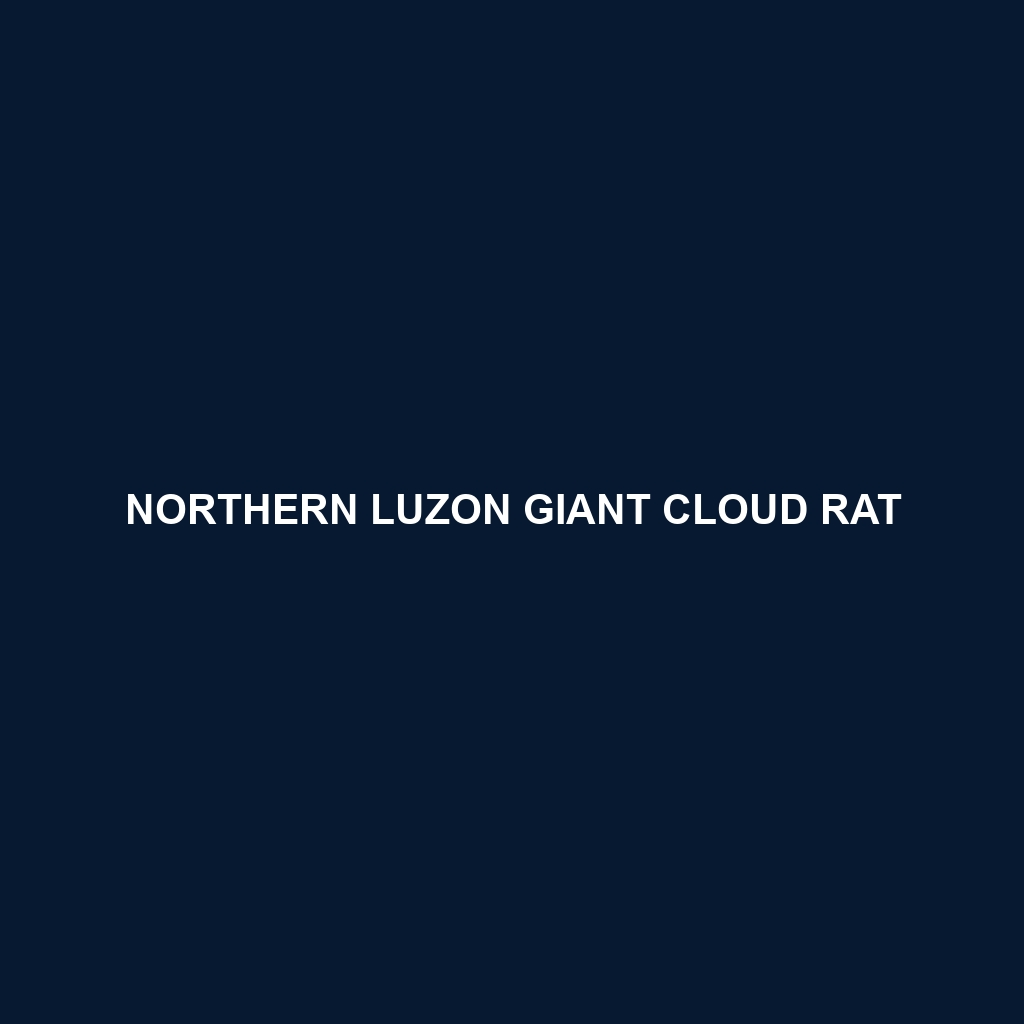Northern Luzon Giant Cloud Rat
Common Name: Northern Luzon Giant Cloud Rat
Scientific Name: Crateromys schadenbergi
Habitat
The Northern Luzon Giant Cloud Rat is primarily found in the mountainous regions of the northern Philippines, specifically on the island of Luzon. It inhabits montane forests, dense shrubland, and occasionally agricultural areas, typically at elevations ranging from 1,200 to 2,500 meters above sea level. Its preference for humid, dense foliage allows it to thrive in a sheltering environment rich in biodiversity.
Physical Characteristics
This impressive rodent is notable for its large size, with adults weighing between 1.5 to 2.5 kilograms. The Northern Luzon Giant Cloud Rat features a distinctive coat that is a mix of brown and grey, with a lighter underside. Its long, tufted tail can exceed its body length, aiding in balance and agility. The broad, flat head and large, expressive eyes are also distinguishing features, making this species visually striking in its natural habitat.
Behavior
The Northern Luzon Giant Cloud Rat exhibits primarily nocturnal behavior, becoming active during the night to forage and socialize. It is known for its arboreal lifestyle, often climbing trees in search of food. This species displays strong territorial instincts, marking its territory with scent markings. Social interactions are also common, as these rodents are often seen in groups, especially during feeding or grooming activities.
Diet
As herbivores, Northern Luzon Giant Cloud Rats primarily feed on a variety of fruits, leaves, seeds, and flowers. Their diet is vital for seed dispersal within their ecosystem, contributing to overall forest health. They are particularly fond of native Philippine plants, and their foraging habits can significantly influence the plant community structure in their habitat.
Reproduction
Breeding occurs throughout the year, with a peak in activity during the rainy season, which provides ample resources for raising young. Females typically give birth to 1-3 offspring after a gestation period of about 30-40 days. Offspring are altricial and require considerable maternal care; mothers will remain close to their young for several weeks until they are sufficiently developed to venture out on their own.
Conservation Status
The Northern Luzon Giant Cloud Rat is currently classified as endangered by the International Union for Conservation of Nature (IUCN) due to habitat destruction and fragmentation caused by logging and agricultural expansion. Conservation efforts are crucial to protect this unique species and its montane forest habitat.
Interesting Facts
This species is one of the largest rodents in the Philippines and is often referred to as a “giant” due to its impressive size. The Northern Luzon Giant Cloud Rat was first described scientifically in 1895, and it remains a relatively elusive creature, making it a subject of interest for researchers and wildlife enthusiasts alike.
Role in Ecosystem
The Northern Luzon Giant Cloud Rat plays a significant role in its ecosystem as a seed disperser, assisting in the regeneration of forested areas. Its foraging habits not only help in maintaining plant diversity but also provide food for various predators, thereby forming a crucial link in the food web of its habitat.
